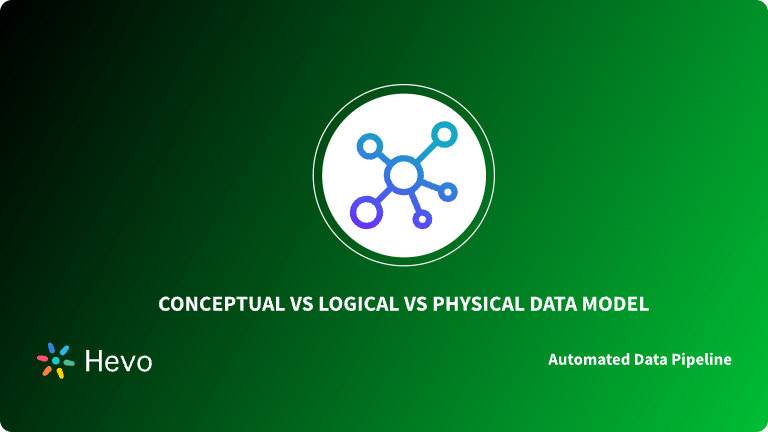Good quality data is the holy grail, and that’s what you should always aim for. But that saying goes incomplete without data models. While all of us know the importance of data, profits or sales turn in only when organizations know how to find, model, track and understand their data appropriately.
Data modeling, being one of the most important components of decision-making, involves the creation of visual associations and structures to better understand and optimize your business processes. There are different types of data models that can efficiently provide your business with the information and insights it needs, but much goes unsaid about how to do so effectively.
While the internet has opened multiple ways to create data models online or offline, these strategies and steps to create high level data models will assist both channels. In this guide, we’ll share 10 steps and best practices to create and maintain a high level data model. But before we dive right into the topic, let us first discuss what data modeling is, and why does it matter for your organization.
Table of Contents
What Is Data Modeling?
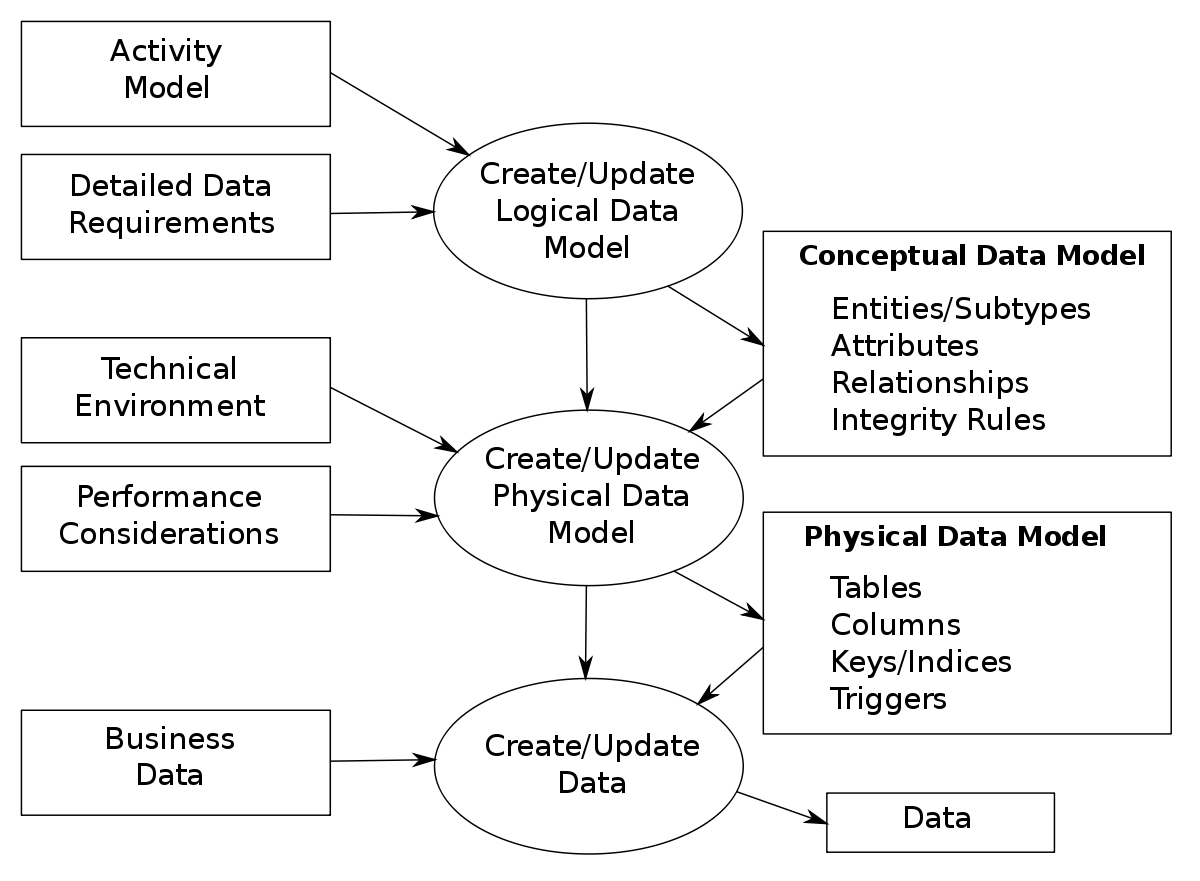
Every team in a sports league needs a set of strategies to better its chance of success. Without it, it’s practically impossible to judge, adapt and improvise the game. Just like good teams require effective strategies, success in business requires you to have good data arranged in data models.
Underneath every successful software development process or business initiative, there is a requirement for organized and logical distribution of data. This distribution should communicate structure, content, and relationships between different entities in ways that are easily comprehensible. Data modeling is that step; one that creates visual associations and structures for your business processes.
You can understand data models as simplified diagrams with entity types, attributes, relationships, integrity rules, and the definitions of those objects. These data models standardize how data objects relate to each other, and the ways in which they are grouped and organized. A good data model, thus, certifies actionable results, standardizes information, portrays an understanding of the best data practices, determines trust, and can adapt to changes in your requirements.
Data modeling also increases consistency in naming, rules, semantics, and security, which in turn aids in better data analytics. The process of data modeling occurs at three different levels – conceptual, logical, and physical.
- Conceptual Data Model: A high-level conceptual overview of data that places your initial requirements.
- Logical Data Model: A data representation that defines the structure of data entities and their relationships. A logical data model develops a technical map of rules and data structures that can be implemented in databases.
- Physical Data Model: A schema or framework that organizes your data into tables, and accounts for access, performance, and storage details. The logical data model is the basis for developing the physical model, which gives an abstraction of the database and helps to generate the schema.
Exploring the best databases for 2025? Hevo makes it simple to migrate data from any of these top databases to your desired destinations. Our no-code platform automates data pipelines, ensuring smooth and efficient data transfer.
Why Use Hevo?
- Broad Database Support: Seamlessly connect with a wide range of databases and load data to your preferred destinations.
- Automated Data Migration: Reduce manual effort with automated data syncing and transformation.
- Real-Time Data Flow: Keep your data up-to-date and ready for analysis.
Don’t just take our word for it – see why we’re rated 4.3/5 on G2.
Get Started with Hevo for FreeWhy Is Having a Common Data Model Beneficial?
- Clearer Scope: Data modeling provides a clear view of how your data entities, their attributes, and their relationships are structured. This ensures an accurate and unmistakable representation of data, which lowers the risk of errors in software development and decision-making.
- Consistency: Using data modeling, your organization introduces consistency in documentation and system design. A well-constructed data model serves well and provides a basis for long-term maintenance.
- Improved Communication: Your business teams and developers can communicate better when there is a unified data vocabulary around data objects, data requirements, and the need to support existing business processes.
- Missing or Redundant Data: Data models help users catch errors early and identify missing or redundant data while building new software.
- Cheaper Upgrades: Although the initial cost and labor of setting up your data objects and their relationships using data models can get broad, the result is a system that is easier to maintain and extend. In the long run, your IT upgrades or maintenance runs are cheaper to perform.
Types of Data Models
Data models are essential to capitalize on data. Whether you want to represent data visually for better understanding or express and clarify your business requirements, data models are a must. It is important to be able to use a variety of models so that you can successfully draw on them and use them to your advantage.
The following are the several types of data models:
ER (Entity-Relationship) Model
An ER (Entity-Relationship) model is a high-level conceptual model that defines the structure and contents of your data in accessible visual formats. This makes it easy for developers and data engineers to keep track of information.
ER Diagrams use different symbols, text, and connecting lines to represent data – rectangles to represent entities like people, objects, or concepts, ovals to define their attributes, and diamond shapes to represent their relationships. An ER Design:
- Brings conceptual simplicity to your data
- Establishes clear communication, and
- Are quite flexible to use.
To understand what an ER high level data model looks like, here’s a sample ER Diagram for an eCommerce website:
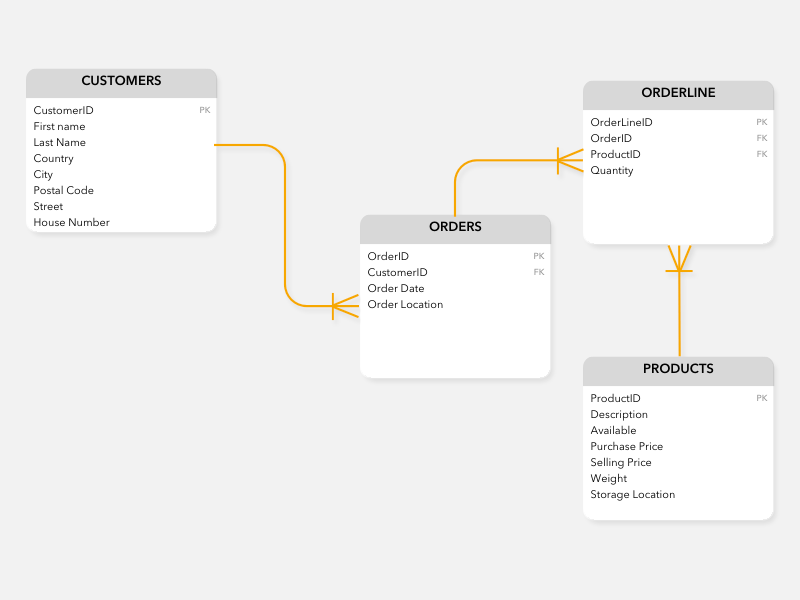
Recommended:
Read our success story on how we used ER Diagrams to enforce schema and efficiently replicate data to a destination – Hevo’s Secret to Enforcing Schema: A Customer-Loving Synergy.
Hierarchical Model
Hierarchical models represent data organized in a tree-like structure, where each record consists of one parent record and many children. It is considered the first database model developed by IBM in the 1960s.
In a hierarchical data model, the data structure is simple, but inflexible due to the one-to-many relationship. In these models, files are linked in a parent-child fashion. Each parent can reference multiple children, but each child is linked to only one parent.
This means that adding new relationships can result in wholesale changes to the existing structure. This also means that all existing applications will also need to be modified.

Network Model
Network data models arose from the inadequacies of hierarchical data models. Instead of having a child that is only related to one parent, network data models allow a child to have several parents. As a result, network data models have many-to-many relationships.

Relational Model
Relational data models are the most commonly used and well-known data models. They represent data as relations, or tables, and are ubiquitous to Relational Database Management Systems (RDBMS).
In these models, data is stored in the form of two-dimensional rows and columns, where the columns represent the attributes of an entity and the rows represent the records. A relational model is an ideal choice when information needs to be related to each other and has to be managed in a consistent, secure, and rules-based way.
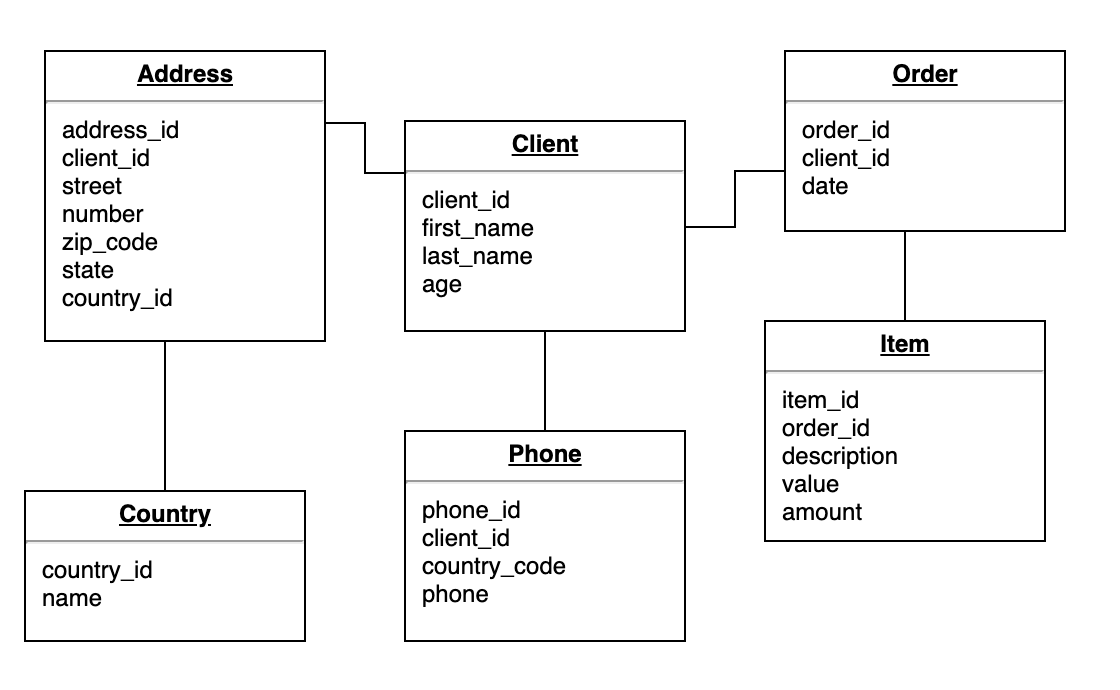
Object-Oriented Data Model
Object-oriented data models become popular with the rise of object-oriented programming languages, where software design is organized around objects rather than functions and logic. These “objects” are abstractions of real-world entities with different attributes. All objects feature multiple relationships defined between them.
In simpler terms, object-oriented data models can be thought of as a combination of object-oriented programming and relational data model.

Dimensional Data Model
Dimensional data models were developed by Ralph Kimball, and they are primarily used for improving the data retrieval speeds for analytic purposes in a data warehouse or a data mart.
These models use Dimensions and Facts to store the data in a data warehouse efficiently. They consist of facts and dimensions tables, which makes it easy to locate information for reporting and retrieval purposes. Dimensional data models are widely employed by OLAP systems.
More information on dimensional data modeling can be found here- Dimensional Data Modelling: 6 Critical Aspects.
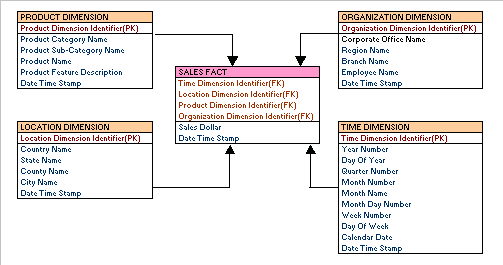
What Is a High Level Data Model?
A high level data model presents a broad view of the core concepts and principles of an organization, in a way that’s simple to understand. Think of it as a master layout for your home. When you design one, you think of the number of bedrooms and bathrooms your home will have.
Similarly, in the context of data models, if you are an eCommerce website merchant, a high level data model will include Orders, Customers, Region, Products, and their relationships.
An example of a high level data model can be an ER diagram (as shown previously for an eCommerce store), or a network data model, where developers and business analysts can know the entities, attributes, and their relationships in different tables.
10 Steps To Create a High Level Data Model
With the basics of data models, types of data models, and high level data models in place, let’s get right into the cardinal topic of this piece – how you can create data models.
Listed below are 10 steps that you can use, out of sequence, but in the given order, to build a successful high level data model.
Step 1: Identify Your High Level Data Model’s Purpose
Your high level data model should capture the essence of your problem statement- “What am I trying to solve?”
A high level data model is built around a business need or a process improvement. Moreover, while building such, you need to ensure that your high level data model creates a clear understanding of the terminology and the business rules for everyone. This includes people who have a role to play but aren’t familiar with data models.
Once you have decided its purpose, you then need to determine your approach – top-down, bottom-up, or hybrid. When the right factors are combined with a correct modeling method, the likelihood of a successful data model increases substantially.
Step 2: Identify Your Stakeholders
The next step is to verify and create data model that encompasses the needs and requirements of all stakeholders. Your stakeholders are people who will be affected by your data model structure, either directly or indirectly.
When your purpose is to capture a current or prospective sector of your business, your high level data models will be more focused on business aspects and directed towards business analysts and business users.
When your purpose is to capture an existing or proposed application, your model appeal will be more technical and application-specific and directed towards developers and database administrators.
Step 3: Inventory Available Resources
With two topics in place – why you are building the model and who will be involved in building and using it, it’s time to determine your required resources. There are two types of available resources: people and documentation.
Your people will include professionals from business and IT backgrounds. Business people may be management and/or knowledge users. IT resources can span the entire IT spectrum, from analysts to developers, from program sponsors to team leads.
Documentation will include system or requirement documents. System documents can be in the form of standard vendor documents for software packages or documents created to support legacy applications. Requirement documents can be business, functional, and technical requirements.
Step 4: Determine Your Data Model Type
After you’ve decided on your purpose and resources, choose the most appropriate high level data model type and perspective that serves you the best:
- Relational Data Model: A data model describing the use of data tables with their relations.
- Dimensional Data Model: A data model to read, summarize, and analyze information from a data warehouse with a specific focus on data analytics.
- Business Perspective: A high level data model perspective when choosing to design a new business initiative, an enterprise model, or while starting a new development task.
- Application Perspective: A high level data model perspective when choosing to design a new application, restyle an existing one, or while starting a new development task.
Step 5: Select Your Approach
There are three models to choose from:
- Top-down approach: One that goes from generic to specific. This approach starts from a business need perspective, with a big picture goal, and carries down to different groups with different action plans.
- Bottom-up approach: One that goes from specific to generic. In this approach, the focus is on the existing systems’ environment, and how they can be improved to achieve the organization’s overall goals.
When creating high level data model online or offline using a bottom-up approach, you can assess your current operational systems or reporting systems and lay steps to improve them.
- Hybrid approach: The hybrid approach is a mixture of both. It starts with some information using top-down analysis and some information using bottom-up analysis. The entire process is a constant loop that compares your business requirements with what information is available.
Step 6: Complete Your Audience-View Data Model
Following on deciding on your data model approach, you now need to build an audience view data model that will capture their viewpoint. This will be the first step in getting your information across; using terminology and rules for those who will be using it.
The whole idea is to get their viewpoint and arrive at the best possible solution, the best possible data model relationship types, without overcomplicating or overvaluing one’s opinions.
Step 7: Incorporate Enterprise Terminology
You can improve your organization-ready high level data model to include an enterprise perspective. To do so, you would have to modify your audience view model and align it with enterprise terminology and rules.
Step 8: Signoff
Once your data model is complete, take it on a round of inspection with your stakeholders. When your high-level data model is formally assessed, it demonstrates that you followed best practices and that it fits their needs. You can do so via email or other forms of team contact, as well as through review meetings.
Step 9: Market
Marketing is about advertising your data model, so the ones who appear to benefit from it can know about it and use it. It is critical to approach the marketing part of your high-level modeling effort as a project in and of itself. As part of your project’s deliverables, make sure to include a specific communication plan which outlines both your message and target audience.
Step 10: Maintain
Thriving and prolonged community use isn’t possible without constant revisions to your high level data model. Whether you create data model online or offline, your high level data model will require maintenance, on a minimal level, after it’s launched. User requirements will change, requiring explicit methods to maintain the current model and keep it consistent with the other model layers.
This concludes the 10-step process for creating a high-level data model. We hope the principles given were clear and thorough, and that they assisted you in selecting the correct data modeling technique for your company’s objectives.
Related:
- Understanding the Stages & Types of Data Models: A Comprehensive Guide 101
- Data Enrichment vs Data Cleansing: 3 Critical Differences
- What is Data Masking? 5 Key Types and Techniques
Conclusion
Choosing and building the right data model for your business requirements guarantees these benefits:
- Clearer scope and a better understanding of business data.
- Unified vocabulary and improved communication.
- Better performance for your application and database.
- Organization-wide consistency in documentation and system architecture.
- Cheaper upgrades.
While high level data models bring a helicopter view of your business data to match and compare on business objectives, it’s a fundamental fact that data modeling can’t exist without ETL, and ETL can’t exist with data modeling. Doesn’t matter whether you create data model online or offline, ETL is integral to data models. Discover essential best practices for data modeling to improve data consistency and performance.
It can readily integrate your data from frequently used SaaS applications and databases to your chosen data warehouses like Google BigQuery, Snowflake, Amazon Redshift, or Firebolt, for analysis within minutes.
Having a beneficial tool like Hevo that establishes a single source of truth for all of your company’s data will undoubtedly speed up your data analysis and integration process and give a boost to your organization.
Why not give Hevo a try? Sign Up 14-day free trial and experience the feature-rich Hevo suite first hand. You can also check our unbeatable pricing and make a decision on your best-suited plan.
Post your comments on learning about high level data models and their types. We’d like to hear your thoughts and ideas. Tell us which data models do you use for your business and why.
FAQ
What are the 4 types of data models?
Conceptual Data Model: High-level representation focusing on business concepts and their relationships.
Logical Data Model: Defines data structure and relationships without considering physical implementation.
Physical Data Model: Specifies the physical storage of data and database schema.
External Data Model: Describes data from a user perspective, showing how they interact with the system.
What is the difference between high level and low level data model?
High-level data models focus on business requirements and abstract data representation.
Low-level models focus on detailed, technical aspects of data storage and access.
What is high level Modelling?
High-level modeling focuses on capturing the overall structure and relationships of data without delving into implementation details.

